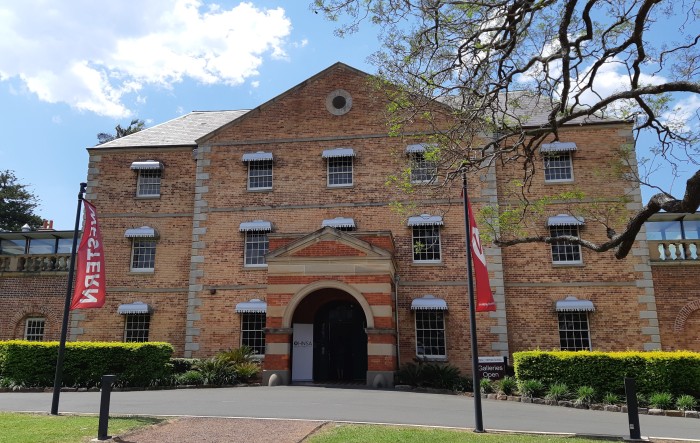
It was about three years and 11 months ago that I first discovered the Historical Novel Society of Australasia (HNSA) and their biannual conference – a whole month too late to attend. Two years ago I didn’t feel I could attend because I wasn’t earning an income so finally, this year I’m here: at the University of Western Sydney in lovely Parramatta! And although Parramatta is in Sydney, there are no beaches in sight, nor the harbour, but instead the Parramatta River and the wonderful history of Australia’s second oldest city (founded in 1788) established as the food bowl for the growing city of Sydney. So a rather appropriate location for a bunch of historical fiction writers, don’t you think?
By the way it’s really cool going to an event where when someone asks you ‘what do you write?’, you don’t have to preface your response with ‘I write historical fiction’!
So four years ago I was in the middle of the first draft of ‘Quod Island’ (YA manuscript set on Wadjemup/Rottnest Island in the 1860s) and grappling with many tricky questions that today’s first session touched on. Things like what do you do if you discover during your research that two characters that you want to have meet couldn’t have possibly been in the same place at the same time, or how closely do you have to stick to historical accuracy when you write historical fiction…
This morning’s session was ‘Making research work for you’ by Pamela Hart (Freedman) which I attended thinking I could learn a thing or two from even though I’ve done tons of research for a number of projects (I write short stories too), but mostly for my ‘Quod Island’ manuscript and a new project set on both Kangaroo Island, SA and King George Sound, WA.
So some of the takeaways from this session were:
· If you’re asking the question: should I do more research or should I begin to write, the answer is begin to write – because you can always go back and do more research while writing.
· Three months of research is probably enough and the more practiced you are at writing historical fiction, the more you understand how much information you need (and don’t need).
· Organise your research when you find information, make sure you save it with a file name that is useful for the project you’re working on – eg if it is a 17th century painting containing a dress you want your protagonist to wear, call it ‘Corinne’s day dress’ not ‘Rembrandt Painting’ and save it in a folder labelled ‘clothing’ or the character’s name. This will help you find it when you need it.
· If you find webpages, download and save the file and name them in a way that’s related to your project or aspect of the project. Alternatively save screenshots and name appropriately.
· If you’re writing Australian historical fiction Trove is a fabulous place to start your research – spend a day reading the newspapers of the day, the ads, the letters to the editor and notices as much as the articles themselves. And if you’re looking at non-newspaper resources on Trove, it will tell you where copies are held – you can access them through interlibrary loans, or get copies or scans.
· Don’t underestimate research that has already been done for you in PhD theses. I’ve been fortunate enough that two generous writers have sent me links to their theses, but you can search university websites for them too.
· And remember libraries, and more importantly Research Librarians, are amazing. They can assist with your research, ie track things down for you or point you in the right direction.
· Remember when you use Google don’t just get stuck on the first page, what you’re looking for might be on page 5, and although Wikipedia is good for general information there are usually lots of references at the end that are worth investigating.
And that was only the first session – watch this space!


